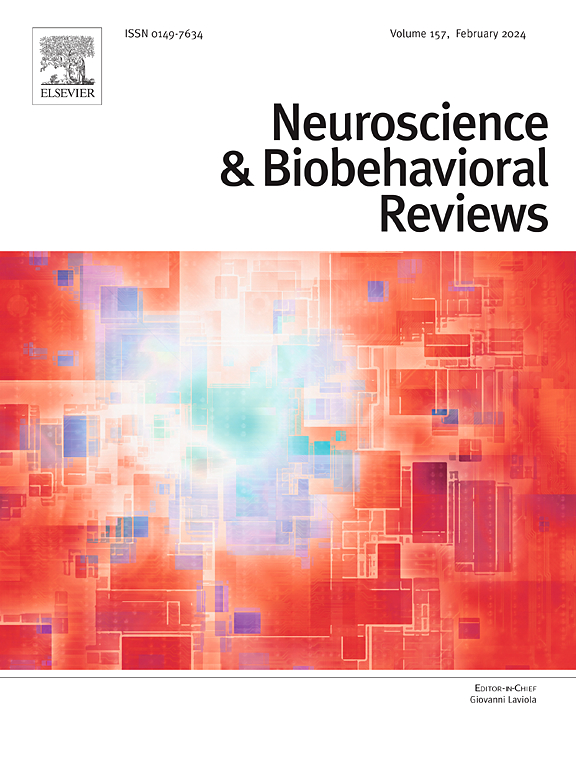青少年自残和自杀风险的决定因素:非临床样本中共同和独特因素的系统回顾和图表。
IF 7.9
1区 医学
Q1 BEHAVIORAL SCIENCES
引用次数: 0
摘要
自杀是10至19岁人群死亡的第二大原因。据估计,四分之一的青少年至少有过一次自残行为,其中25人中有1人在首次出现自残行为后的10年内自杀身亡。尽管有这些令人震惊的统计数据,但大多数风险评估工具是为临床环境中的成年人设计的;对社区青少年自残行为的共同和独特风险因素的理解存在差距。为了解决这个问题,我们系统地回顾了观察性研究,研究了非临床青少年自我伤害和自杀行为的危险因素。我们的方案遵循PRISMA指南,并在PROSPERO注册(CRD42023463134),研究问题使用PICOS框架进行结构化。我们系统地检索了EMBASE、Scopus、PubMed、PsycINFO和Web of Science,辅以滚雪球抽样,并用纽卡斯尔-渥太华量表评估质量。两位审稿人独立筛选和提取数据,由一位高级研究员解决冲突。通过叙事综合分析数据。从鉴定的1,651篇文章中,纳入了8篇,样本量从70到73,648。确定了37个危险因素,并通过Sankey图直观地传达。关键因素包括女性性别、sib病史以及心理、神经、家庭和社会领域的脆弱性。尽管许多研究是横断面的,缺乏强有力的种族代表性,但我们的研究结果强化了先前的文献,将青少年SIB与特定的个人和环境因素联系起来,提供了一个系统的概述,强调了青少年的非临床风险,以及早期识别和量身定制的预防和治疗策略的必要性。本文章由计算机程序翻译,如有差异,请以英文原文为准。

Determinants of risk for adolescent self-harm and suicide: a systematic review and diagram of shared and unique factors in non-clinical samples
Suicide ranks as the second leading cause of death among individuals aged 10–19. Estimates suggest that one-quarter of adolescents have self-harmed at least once, with 1 in 25 of them dying by suicide within 10 years of their initial self-harm presentation. Despite these alarming statistics, most risk assessment tools are designed for adults in clinical settings; a gap in the understanding of shared and unique risk factors for self-injurious behaviours (SIBs) in community adolescents. To address this, we systematically reviewed observational studies examining risk factors for self-harming and suicidal behaviours in non-clinical adolescents. Our protocol adhered to PRISMA guidelines and was registered in PROSPERO (CRD42023463134), with the research question structured using the PICOS framework. We systematically searched EMBASE, Scopus, PubMed, PsycINFO, and Web of Science, supplemented by snowball sampling, and evaluated quality with the Newcastle-Ottawa Scale. Two reviewers independently screened and extracted data, with a senior researcher resolving conflicts. Data were analysed through narrative synthesis. From 1651 articles identified, 8 were included, with sample sizes ranging from 70 to 73,648. Thirty-seven risk factors were identified and visually conveyed through a Sankey diagram. Key factors include female sex, history of SIBs, and vulnerabilities across psychological, neural, familial and social domains. Although many of the studies were cross-sectional and lacked robust ethnic representation, our findings reinforce previous literature linking adolescent SIB to specific individual and contextual factors, contributing a systematic overview that underscores non-clinical adolescent risk and the need for both early identification and tailored prevention and treatment strategies.
求助全文
通过发布文献求助,成功后即可免费获取论文全文。
去求助
来源期刊
CiteScore
14.20
自引率
3.70%
发文量
466
审稿时长
6 months
期刊介绍:
The official journal of the International Behavioral Neuroscience Society publishes original and significant review articles that explore the intersection between neuroscience and the study of psychological processes and behavior. The journal also welcomes articles that primarily focus on psychological processes and behavior, as long as they have relevance to one or more areas of neuroscience.

 求助内容:
求助内容: 应助结果提醒方式:
应助结果提醒方式:


